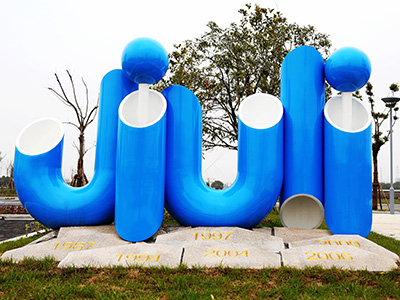(1)0Cr19Ni9(304)、0Cr19NiN(304N)、00Cr19Ni10(304L)、00Cr19Ni10N(304LN)、0Cr18Ni10Ti(321)、0Cr18Ni11Nb(347)
0Cr19Ni9 is the production and consumption of the largest, the most well-known one of the 18-8 type chromium-nickel stainless steel. This brand accounts for about 80% of the total output of austenitic stainless steel. This steel has excellent comprehensive properties. Its properties are as follows.
Excellent corrosion resistance of stainless steel, in all kinds of atmosphere and in addition to sea water containing Cl- ≤10x10-6 or 200x10-6 fresh water medium, in the concentration ≤65%, boiling temperature nitric acid and in a variety of weak reducing acid medium, neutral salt and alkali have good corrosion resistance.
Due to its excellent cold and hot machinability, 18-8 steel can produce all kinds of metallurgical products, such as plates, tubes, wires, strips, profiles (including profiled profiles), etc., and has excellent mechanical properties (Figure 1), especially excellent plasticity and toughness. Due to the absence of brittle transition temperature (Fig. 2), 18-8 steel is also one of the commonly used low temperature stainless steels. The strength of 0Cr18Ni9 can be significantly improved by cold hardening (Fig. 3). With the increase of cold deformation, the hardness of steel increases and the elongation decreases. This is related to the increase of cold working deformation and the formation of a large number of martensite.
Fig. 1.0 Mechanical properties of Cr19Ni9(304) solid solution state at room temperature

Fig. 2. Toughness of Cr17 (430) 18-8 (304), 18-12-2 (316) stainless steels at different temperatures

Fig. 3. Influence of cold working deformation on mechanical properties of 304 steel
18-8 stainless steel also has excellent cold forming, can withstand various forms of cold processing forming, especially suitable for deep drawing and deep drawing and other cold deformation, 0Cr18Ni9 (304) steel N value, R value and Erickson cup value (ER) can reach about 0.05, about 1.1 and 14mm respectively.
Good weldability, it can be welded by general method, no preheating before welding, no heat treatment after welding. The main weakness of 0Cr19Ni9 performance is that it is sensitive to intergranular corrosion after welding when the welding section size is large, and it is also very sensitive to stress corrosion in water environment containing Cl- (including wet atmosphere) (see Figure 4). The low strength and poor cutting ability need to be improved.

Fig. 4.304, 304L, 316, 316L comparison of stress corrosion fracture boundaries
Nitrogen grades 0CrNi9N and 00Cr19Ni10N are mainly due to nitrogen solution strengthening, which improves the strength of 0CrNi9N and 00Cr19Ni10N (Fig. 5), but does not significantly reduce the plastic and toughness of steel. At the same time, the corrosion resistance of steel is further improved. Nitrogen containing 0CrNi9N is mostly used in high pressure vessels and centrifuge components requiring 600℃ strength.

Fig. 5.Strength comparison of 304 and 304N
1Cr18Ni10Ti, 1Cr18Ni11Nb and 00Cr19Ni10 containing stabilized elements Ti and Nb are mainly used for weldability of large cross-section sizes to prevent the intergranular corrosion sensitivity of 0CrNi19 (304). 1Cr18Ni10Ti and 1Cr18Ni11Nb can also be used to prevent stress corrosion caused by polysulfuric acid and some applications requiring high strength at high temperature. But to prevent 1Cr18Ni10Ti welding fusion line is easy to produce the tendency of knife edge corrosion. (From Introduction to Stainless Steel)


















